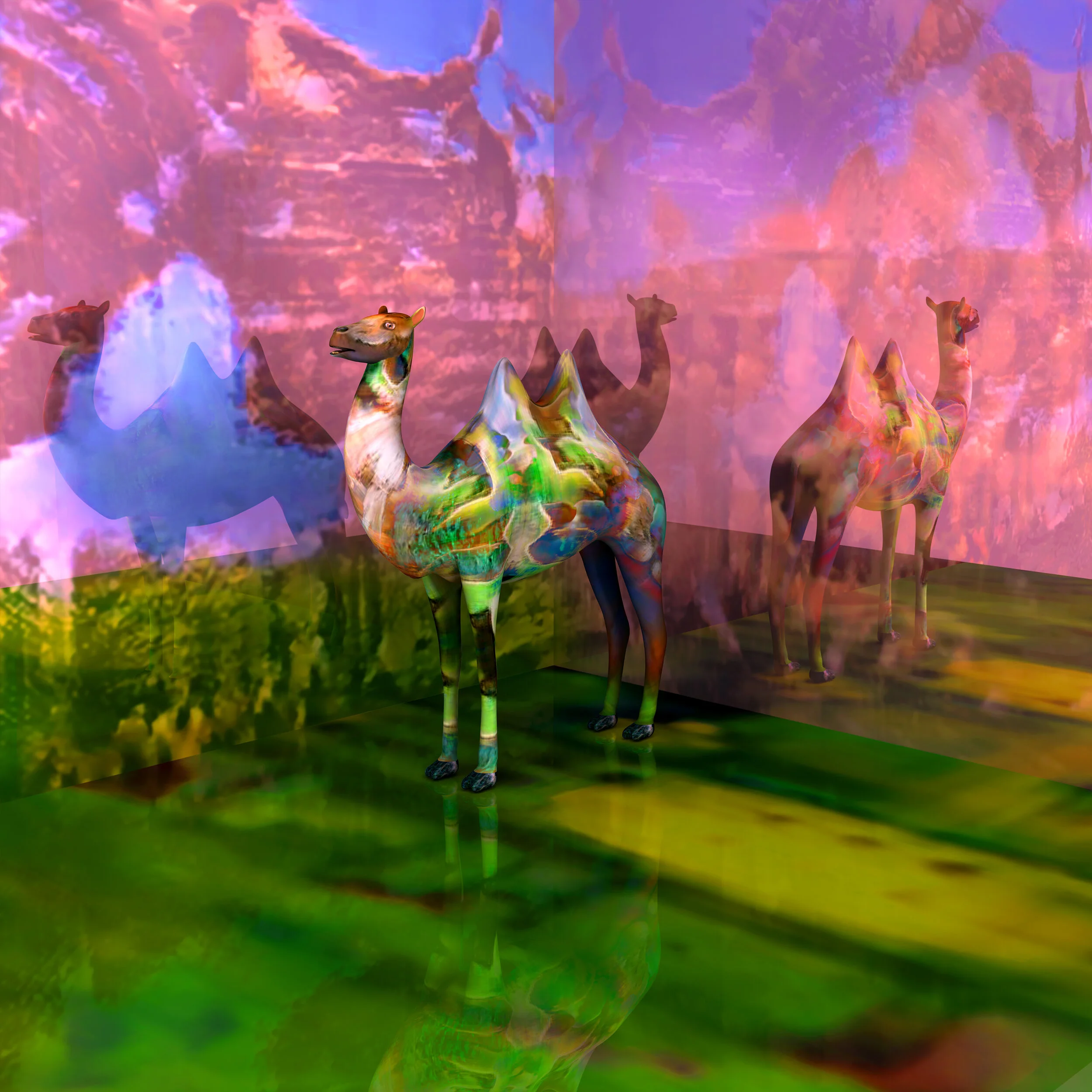Artist Carla Gannis Produces Dream Worlds with Playform’s No-Code AI

Interdisciplinary digital artist Carla Gannis utilizes mixed media and AI technology in expanding her artistic practice through her avatar Carla Gan.
Carla Gannis is an interdisciplinary artist based in Brooklyn, New York. She produces works that consider the uncanny complications of grounded reality and virtual reality, nature and artifice, science and science fiction in contemporary culture. Fascinated by digital semiotics, Gannis takes a horror vacui approach to her artistic practice, culling inspiration from networked communication, art and literary history, emerging technologies and speculative design.
Gannis’s work has appeared in exhibitions, screenings and internet projects across the globe. Recent projects include “Portraits in Landscape,” Midnight Moment, Times Square Arts, NY and “Sunrise/Sunset,” Whitney Museum of American Art, Artport.
Playform sat down with artist Carla Gannis to discuss her interdisciplinary digital art practice, her integration of AI, and her avatar Carla Gan.
Playform: How did you begin using Playform?
Carla: I first heard about Playform when Ahmed Elgammal, founder of Playform spoke at the NYC creative tech week conference on AI and creativity. This was April 2019, and he introduced this amazing new platform that provided a studio for artists to experiment with and collaborate with an AI. He also participated in this virtual fireside chat, where they were talking about issues like the AI and artists creative process, and what kind of new collaboration is involved when we’re working with emerging intelligences but also how is it similar to other art forms like photography and other forms of digital imaging generative art that require pre curation tweaking and post curation by the artist. I signed up to work with Playform immediately after these two talks as these questions were exactly what I was engaging with in my own practice through my relationship with my avatar Carla Gan, a fictional AI cross platform avatar for recursive live action generative adversarial network
P: Your art practice is very distinct, and you have a background in Interdisciplinary and Digital Art. What are the early beginnings of your art practice?
C: I’m a new media or interdisciplinary or digital artist, I have many different ways I described my practice. I teach at NYU in the Integrated Digital Media program there in the Department of Technology, Culture and Society. I’ve been thinking about virtual life, computer simulated systems and emerging intelligences for quite some time.
My avatar Sister Gemini, and who first emerged in 1999, was my ultra digital ego, who was like me but also autonomous AI fiction, of course, as I just recently finished a back to back BFA and MFA in painting. And we’re talking old school oil paintings on canvas. But in the late 90s I threw away all my paintings, rather dramatically and began working with digital technologies, still having no degrees in computer science, and being accustomed to traditional artists tools like paints and paint brushes. At that time, I couldn’t really imagine actually working with a tool or a system that could grow, adapt and learn. When you work with a paintbrush, it doesn’t learn for me. Today, Carla Gan is my avatar for recursive live action generative adversarial network. We work together as an artist.
P: Can you speak about your latest series, “Do Androids Dream of Endangered Animals?”
C: This series entitled Do Androids Dream of Endangered Animals, DADEA for short seeks to produce dream life worlds that speak to very real issues of our time. They speak to real issues of our time but through a visual language of liminality. I trained the AI on images of these endangered species, and 3D texture mapped them. I also added backgrounds to these new prints that combine architecture from all seven continents. With flora and fauna from around the world, stitched together via Playform, human made constructions with biological nature; a nod to the author Marge Piercy and her 1978 speculative fiction novel, “Woman on the Edge of Time,” where she imagines a future where the nature of technology is more integrated with biological nature. I also trained Playform images of freshwater, being another endangered resource on this planet in some ways. I feel that this series is elegiac and my attempt to teach a machine about life on the planet at this moment in time, life that may not exist in subsequent eras. Well, if we don’t step up, except for perhaps in the memories and dreams of future intelligences.